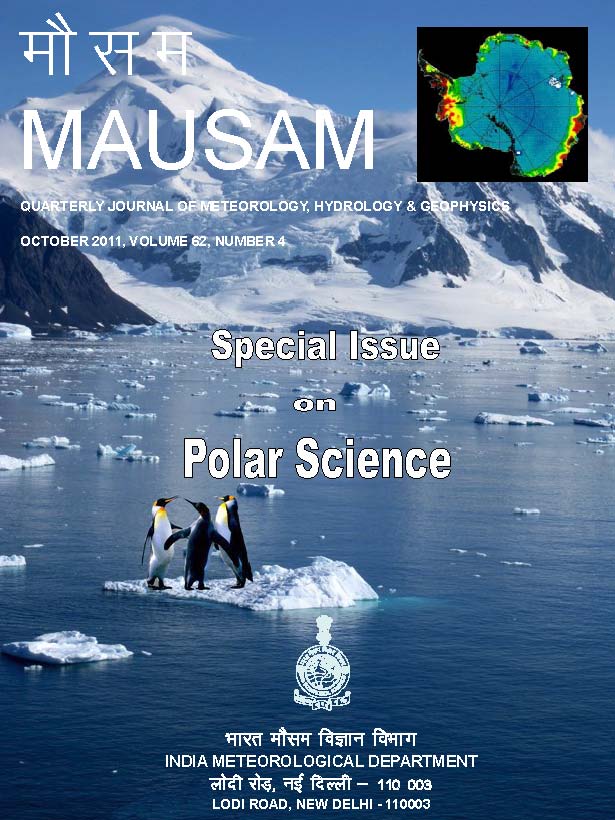Comparison of modern and fossil diatom assemblages and their implication on sea-ice conditions in coastal Antarctic region
DOI:
https://doi.org/10.54302/mausam.v62i4.391Abstract
Antarctic Coastal regions are thought to be characterized by high productivity usually dominated by diatoms. Considering their prime importance in global carbon biological pump, diatom distribution and abundance studies are sparse especially in coastal regions of Antarctica. Biogenic silica is considered to be severely affected by dissolution in the undersaturated ocean water, therefore, combined study of diatom assemblages from water column and those found in the sediments is important. Therefore, we conducted a combined study of sediment diatoms along with surface water diatoms collected from Coastal Antarctica. When the modern assemblages are compared to the fossil record, it is clear the most of the important diatoms from the summer assemblages are not preserved in the underlying sediments. The studies reveal that only F. kerguelensis is common abundant species in both water and sediment which suggests that coastal Antarctic region could be having more open ocean influence. In contrast, the presence of sea ice related diatom species from surface sediment indicate for expansion of sea ice or ice edge adjacent to the water column, however such species were not found in the overlying water samples which could be due to less sea-ice extent.
Downloads
Published
How to Cite
Issue
Section
License
Copyright (c) 2021 MAUSAM

This work is licensed under a Creative Commons Attribution-NonCommercial 4.0 International License.
All articles published by MAUSAM are licensed under the Creative Commons Attribution 4.0 International License. This permits anyone.
Anyone is free:
- To Share - to copy, distribute and transmit the work
- To Remix - to adapt the work.
Under the following conditions:
- Share - copy and redistribute the material in any medium or format
- Adapt - remix, transform, and build upon the material for any purpose, even
commercially.



